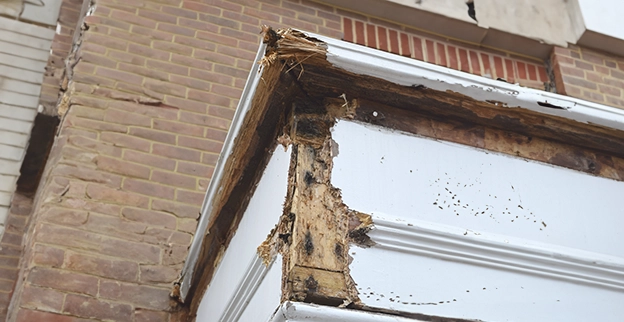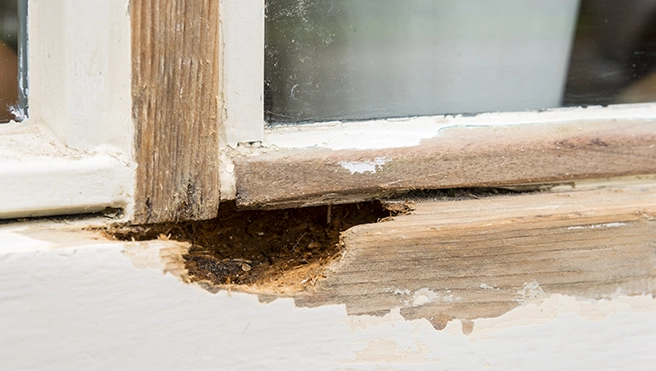Knowing what type of wood rot you’re dealing with can help you know how to get rid of it. There are three different types of wood rot which are aptly named for their appearance. Read on to discover their unique characteristics before learning exactly how we eradicate them.
White Rot
This type of rot loves to eat the structural makeup of wood called lignin. Breaking it down leaves the cellulose intact, giving it a white or yellowish look. This rot is spongy or stringy and thrives in environments between 65-90 degrees Fahrenheit. That means it loves being indoors, so keep an eye out for this one on your door frames and cabinets, as it could cause structural damage.
Brown Rot/Dry Rot
This type of rot looks dry, but it’s not. It needs 20% moisture content to grow, breaking down the cellulose in wood and turning it into a dark brown color. As it breaks down, it will create cube-shaped bits, which will crumble, called a cubical fracture. While fascinating, the type of wood rot travels through your home over building materials like bricks and plaster; however, it will only affect wood. You’ll need a professional to check all areas of your home for dry rot, as it can travel back and forth to reinfect recently treated areas.
Soft Rot
Appearing commonly in fallen trees, this type of rot loves moisture and grows very slowly. If you have soft rot on your deck, it’s easy to get rid of, and likely it won’t have affected a large area. Soft rot can live in temperatures between 0 and 110 degrees Fahrenheit.
It depends on what type of rot you are dealing with, but typically, any area of your home that may have been exposed to moisture can be affected by wood rot. Keep in mind that rot needs at least a 20% moisture content to grow, which means you might find some below your sink in your wooden cabinets or in your soffit if you've experienced a recent plumbing leak. The following areas are generally more susceptible to wood rot and mold growth:
- Doors
- Window frames
- Attic
- Siding
- Steps
- Deck
- Crawl space
If you notice deep cracks across the grain of the wood, off-white fibers, little mushroom-like growth, or yellow tinges, you’ll likely need Memphis wood rot repair. To do this, we’ll remove the damaged wood with a specialized tool. Then we’ll fill it in with wood polyester filler or wood patch. These will fill the cut-out areas and reinforce them to make sure they hold up with time. If the wood is too rotten, we may need to replace the entire beam or strip.






